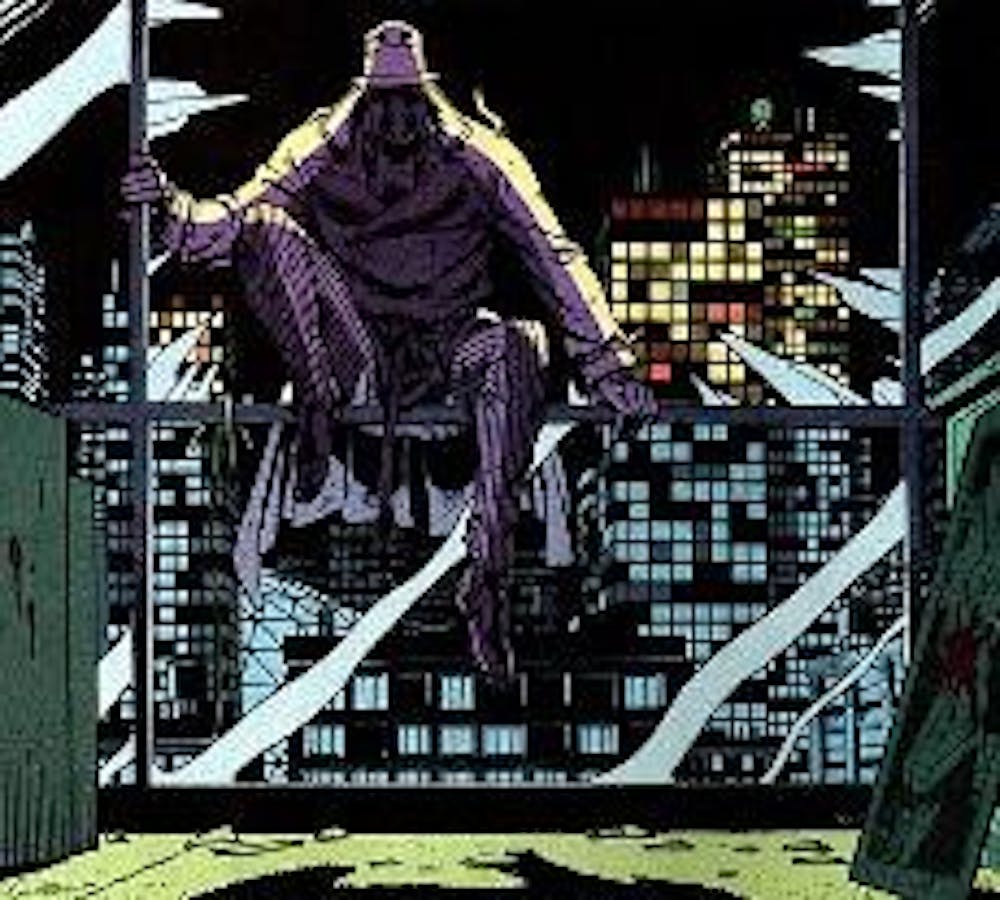There are certain images that have been fused into the brains of comic fans who cut their teeth on "Watchmen" - a mighty fortress rising out of the sands of Mars, the disintegration of a man and his resurrection as a demigod, a lovers' embrace as a mushroom cloud blossoms behind them. It's immediately clear to a reader who just flips through glancing at each page that despite the presence of costumed heroes and stylized action, this is not the story of Superman and his fight for justice. This is barely the same genre.
With "Watchmen"-mania running rampant through the nation thanks to the imminent release of Zach Snyder's cinematic interpretation, Alan Moore's original graphic novel has found more readership than ever. While people who have never read many comic books may not understand all of the in-jokes and references to the history of comics that permeate the 12-issue series, that shouldn't prevent anyone from cracking it open to try and unlock it's mystery.
When Moore started publishing "Watchmen," its impact was already clear. Widely considered his magnum opus, it is an intricate deconstruction of the superhero myth and a fresh lens on the morality of vigilantism. It revels in the campy reputation of tough men in tight rubber suits and makes sly jokes at the expense of a hero culture comic fans know and love.
"Watchmen" unfolds like a great psychological thriller. Opening with the murder of a former masked vigilante, it soon expands into a struggle to defeat a vast conspiracy threatening to take the world to the brink of annihilation. As the world descends into madness, we are left in the company of a handful of former superheroes to shepherd us through this world that, in these times, seems more and more plausible.
Moore channels themes far deeper than non-initiates would expect from the medium. It is a novel about sexual anxiety, xenophobia, moral relativism and the fascist/fetishistic nature of the modern superhero. It is a novel meant for teenagers with a passion for comics and post-grads willing to parse through its layered storytelling and deep symbolism. Each character has a different take on not only the nature of crime but also the very nature of humanity, from Dr. Manhattan's belief that the human race is incidental and insignificant, to Rorschach's division of all people into distinct classes of good and evil - an ideal he takes to such great lengths that it would make Ayn Rand uneasy. These characters are deeply flawed and, to Moore, often beyond redemption.
Snyder's adaptation has caused some fans of the novel to gripe about abridgements and story cuts, and Moore himself considers the novel unfilmable. This belief has merit, if only because the medium reflects the message so well. The deep purples and blues of the book stood in contrast to other comics of its day, creating a signature look thanks to artist Dave Gibbons. Repetitive visual themes and snippets of documents in the mythology of the "Watchmen" universe use the limitations of the comic frame to its advantage and elevates it to an art form.
It is hard to imagine a piece of work that captures the collective terrors and anxieties of our society so well. It still stands as one of the great literary accomplishments of the late 20th century and the peak of the comic aesthetic.
You can reach this staff writer at mrichardson@theeagleonline.com.





